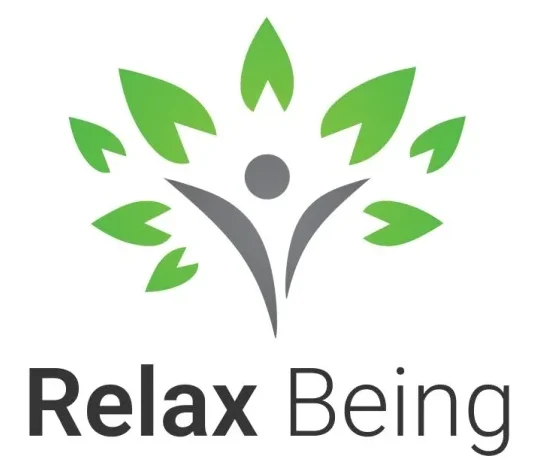
Gratitude and Mental Health
Introduction
Every November, the National Gratitude Month reminds us of the season where people often think more deeply about what they are truly grateful for. I still remember the beginning of my own practice, when I stumbled upon an article where Rogers and Krystle van Deursen explained how small shifts in mindset can transform overall well-being.
They emphasized that gratitude isn’t just an idea; it’s a tool that connects our emotions with healthier thought patterns and can strengthen the link between Gratitude and Mental Health.
What made the biggest difference for me was adding practical ways of appreciation into my daily routine. Instead of waiting for a big event, I started noticing simple blessings like quiet mornings or a kind word from a friend.
Over time, this habit became second nature, showing me how powerful gratitude can be when consistently woven into life. That simple choice to pause and reflect gave me clarity, balance, and a sense of calm I hadn’t experienced before highlighting how Gratitude and Mental Health work together to improve overall well-being.
How would you define gratitude?
For me, gratitude is not just about being thankful for big events, but about noticing the small things we often leave unnoticed. It’s a gentle emotion that changes our perspective, helping us appreciate what is already here rather than chasing perfection.
I believe humans often get caught in thoughts that feel pressing and overwhelmed, but a simple shift of focus makes all the difference. Even when life feels uncomfortable or comfortable, practicing gratitude gives balance. When I woke in the morning today and turned on the faucet to wash my face, the warm water felt like a gift. This everyday practice of mindfulness, even while brushing my teeth, reminds me that thankfulness improves both happiness and Gratitude and Mental Health.
Over the days, I’ve learned that repetition builds a lifestyle of gratitude. With intention, one can turn ordinary things into extraordinary moments. I’ve noticed how such a habit creates an impact on how I handle life’s ups and downs. It’s about allowing judgement to soften, so that practicing gratitude doesn’t feel like chasing an ideal but like living with presence.
Whether I am at my desk or in the kitchen, practicing this awareness keeps me grounded. And although perfection is never the goal, each small act of thankfulness makes life richer, steadier, and beautifully human showing how Gratitude and Mental Health complement each other.
What’s the connection between gratitude and positive mental health?
From my own journey, I’ve seen how gratitude offers an opportunity to shift my thought patterns when a challenging day makes it hard to see the positives in life. Instead of falling into negative aspects and hopelessness, I try naming even small glimpses of good moments: a warm smile at work, a friend’s text, or just the calm of morning tea.
This simple act of daily gratitude practice helps me keep a holistic view of situations, reminding me that humans are natural connection-seekers who need to connect and find a positive connection with others.That is why Gratitude and Mental Health are so deeply linked.
Practicing gratitude doesn’t mean ignoring uncomfortable emotions; instead, it works as a grounding technique that allows balance between venting and balanced thinking. Sometimes, I even play with the alphabet to list things I value, which helps me manage my feelings and build an overall thinking style that values both struggles and strengths.
Having support from people around who encourage me to focus on gratitude strengthens this process, guiding me toward a healthier perspective and proving that Gratitude and Mental Health create a stronger foundation for resilience.
The Impact of Gratitude on Youth Mental Health
When I think back to my teenage years, I remember how sunsets seen from the windowsill of my room made me pause and breathe. At times, even a tiny herb garden outside felt like a world of calm in the middle of busy schoolwork. For today’s youth, who grow up in a fast, reliable, WiFi world filled with endless scrolling, it’s easy to miss these small but powerful moments.
Teaching young people to stop, scrolling for just 3 minutes, take a breath, and think about 5 or 6 things they are grateful for can create a surprising shift in both Gratitude and Mental Health. It’s almost mysterious how such a simple practice can have a far-reaching and profound effect on both body, mind, and spirit.
I’ve seen how these moments each day can reframe circumstances and call out good life experiences, whether it’s the joy of Strong coffee shared in a family book club, the laughter of Healthy, happy kids, or the peaceful silence of 6AM fall mornings.
When young people turn their attention to gratitude, the benefits are not just emotional but also mental, physical, and health related. Over time, this habit allows both youth and adults to practice gratitude and truly reap benefits that lead to improved mental balance, better coping skills, and stronger connections. This shows how Gratitude and Mental Health are essential for growth and overall well-being.
The Science Behind Gratitude: How It Affects the Brain and Emotions
Gratitude has a powerful influence on the brain
From both my own reflections and what neuroscience reveals, I’ve seen how Gratitude has a powerful influence on the brain, shaping not just thoughts but overall emotional wellbeing and mental health. When we engage in expressing thankfulness, it activates the brain’s reward system, especially the prefrontal cortex, which plays a vital role in the regulation of emotions, behavior, controlling impulses, and even delaying gratification.
Modern research shows that this process boosts key neurotransmitters like dopamine and serotonin, creating natural feelings of happiness and contentment. This proves how Gratitude and Mental Health are connected at both a biological and emotional level.
Over time, gratitude essentially ‘rewires’ the brain
Over time, practicing gratitude and mental health exercises can essentially ‘rewire’ the brain. From both research and personal experience, I have seen how Gratitude gradually rewires the brain by strengthening neural pathways that help youth and adults alike to focus more on positive experiences rather than getting stuck in the negative.
With regular practice, the mind learns to adapt when facing challenges, building an optimistic outlook and deeper resiliency in moments of adversity. What fascinates me most is how daily thankfulness supports better decision-making and smoother emotional regulation, almost like enhancing the activity of the prefrontal cortex, which plays a key role in staying calm and clear-minded.
Studies specific to youth highlight
Studies specific to youth highlight that incorporating gratitude and mental health practices can significantly reduce symptoms of anxiety and depression, while also helping to improve sleep quality and boost emotional resilience. I have personally seen in schools where I worked that when students kept journals inspired by The Journal of Positive Psychology, even small regular exercises of thankfulness led to higher levels of life satisfaction and optimism, with lower stress and fewer depressive symptoms.
This positive shift often extended beyond the individual, as it strengthened peer relationships, supported better academic engagement, and created a ripple effect that uplifted the whole group, showing how simple habits around gratitude and mental health can deeply nurture overall well-being.
Practical Gratitude Strategies
Integrating small gratitude practices into daily life can feel transformative when they are tailored to different age groups, and from my own work with youth, I’ve seen how effective and age-appropriate strategies can truly help them build healthy routines that enhance Gratitude and Mental Health. Simple ideas like writing down one good thing before bed or sharing a positive moment at dinner give parents, caregivers, and even mental health professionals practical tools to guide and support children.
I remember introducing a gratitude jar to a group of teenagers, and the joy they felt in watching their notes pile up showed me how easily such habits can grow into lifelong practices.
Youth
When it comes to youth, I have seen how simple Gratitude practices can be deeply impactful yet accessible, especially when they are made engaging and fitting for different developmental stages. For elementary and younger children, a daily ritual like a gratitude circle where each child shares something they feel grateful for creates a positive group atmosphere both in class and at home.
A popular method I often suggest is a gratitude journal, where kids write or draw about what they appreciated that day, which makes the idea feel naturally woven into their lives. For those in Middle and High School, I’ve noticed that older, more reflective students benefit when they deepen understanding by writing gratitude letters, emails, or text messages to people who have positively impacted lives. Expressing thanks in this way helps them strengthen relationships, recognize support systems, and foster a sense of belonging and resilience.
For College-Age students, learning to balance independence and stress, I’ve seen how grounding, more nuanced exercises like listing even the most challenging moments can help them reframe negative experiences. Through Regular journaling, their focus on the people who provide stability allows them to carry Gratitude and Mental Health into adulthood, where greater responsibilities and pressures can still be transformed into growth with the right mindset.
Parents and Caregivers
As parents and caregivers, our role in modeling gratitude for youth is powerful, because by incorporating small habits into family routines, adults create a supportive environment that naturally encourages kids to recognize and appreciate the positive aspects of their lives.
For example, rituals at mealtimes, such as making meals a time to establish a daily habit where each family member can share what they feel thankful for while eating, turn the act into a meaningful ritual that helps highlight everyday positives, and when this open sharing is framed within families as a safe space to talk about highs and lows, children learn to reflect on their day and specifically call out good moments.
One family-friendly activity I’ve used is creating a gratitude jar where each person writes notes of appreciation through the week, then placing them inside and everyone reads together at the end of the month, which emphasizes reflection and provides a visual reminder that gratitude can be taught explicitly, and by teaching children to say thank you both in-person and through writing, we can reinforce the social norm of kindness while encouraging simple practices that build empathy, respect, and healthier interactions with others, reminding them of the impact even small acts of kindness can have on Gratitude and Mental Health.
Professionals
In my years of working with youth and training educators, I have seen how mental health professionals, school staff, and even counseling teams can incorporate gratitude into their daily work to build supportive environments that truly enhance wellbeing.
A simple start can be Gratitude Check-Ins, a quick, powerful exercise where students or clients share what they feel grateful for at the start or end of a session; this simple prompt helps shift focus toward positive thoughts and set a more constructive tone. Using Goal-Setting with a gratitude lens also makes a difference, as it supports acknowledging achievements, appreciation of efforts, and recognizing growth opportunities even in challenges, which reinforces a healthier mindset and builds pride.
I’ve watched displays in classroom and counseling spaces from boards and walls where students post thankful notes to create a community atmosphere, share positivity, and lead to an increased sense of connection. Practicing these habits has been deeply beneficial; many report feeling more connected, having stronger purpose, and even experiencing greater job satisfaction, while also reducing burnout. On a personal level, these practices improve my own engagement, enhancing quality interactions and fostering an environment where everyone involved feels part of a meaningful ripple effect of Gratitude and Mental Health.
Why Gratitude Works
From my own work with youth, parents, caregivers, and even professionals, I’ve seen how Gratitude has a powerful ability to uplift and strengthen people across all ages and roles of life. When someone is practicing it, their mental and emotional resilience grows, creating a solid framework for dealing with everyday challenges.
Research shows that it can lower blood pressure, reduce the risk of heart disease, and improve a person’s physical health. Even in stressful moments, those who express appreciation cope more effectively, showing again the strong relationship between Gratitude and Mental Health. In my experience, this often translates into improving relationships, developing a deeper sense of agency, and navigating their lives with more clarity and strength.
What stands out is how connection becomes better and more relevant when Gratitude is at the center. It helps people recognize the support and kindness they receive, which naturally strengthens bonds. By expressing it often, they experience a reciprocal effect; others tend to respond more positively, leading to increased trust and cooperation.
The impact even extends beyond the personal level, as it promotes a sense of belonging in schools, families, and communities. It can reduce feelings of isolation, increase overall satisfaction, and foster environments where people feel supported and valued.


